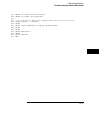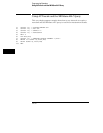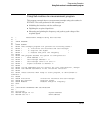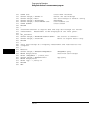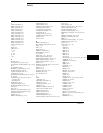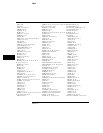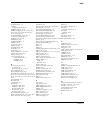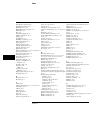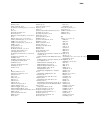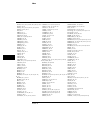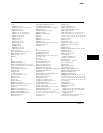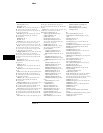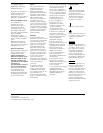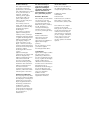
OFFset?, 29–6
offset_argument, 29–4
OPATtern command/query, 17–11, 23–13,
24–11
OPC, 6–5
Operation Complete, 6–6
OR notation, 4–5
OSEarch command/query, 17–12, 23–14,
24–12
OSTate query, 14–8, 17–13, 24–13
OTAG command/query, 17–13, 24–14
OTIMe, 31–6, 31–7, 31–10
OTIMe command/query, 14–8, 23–15
OTIMe?, 31–10
Output buffer, 1–10
Output queue, 5–3
OUTPUT statement, 1–3, 27–4
outrange_greater than, 31–5
outrange_less than, 31–5
Overlapped command, 8–11, 8–19, 9–23,
9–24
Overlapped commands, 4–4
OVERlay, 30–8
OVERlay command/query, 17–14
overlaying waveforms, 30–8
OVERshoot, 32–7
overshoot measurement, 32–7
OVERshoot?, 32–7
OVOLt, 31–16
P
PACK command, 11–17
Parameter syntax rules, 1–12
Parameters, 1–7
Parity, 3–9
Parse tree, 5–8
Parser, 5–3
PATH, 34–12
PATH?, 34–12
PATTern command, 25–6
pattern duration, 34–5
PATTern trigger, 34–2, 34–11
PATTern Trigger Mode, 34–2
peak-to-peak voltage measurement, 32–13
PERiod, 32–8
period measurement, 32–8
PERiod?, 32–8
PLUS, 30–9
POINts, 35–10
points on screen, 35–10
POINts?, 35–10
PON, 6–5
positive pulse width measurement, 32–9
preamble, 35–2, 35–11
Preamble description, 26–6
PREamble?, 35–11
preset user, 29–5, 29–9
PREShoot, 32–8
preshoot measurement, 32–8
PREShoot?, 32–8
PRINt command, 10–10
Printer mode, 2–3
Printing to the disk, 36–27
PROBe, 29–7
PROBe?, 29–7
probe_argument, 29–4
program example
checking for measurement complete, 36–21
compare, 36–9
getting ASCII data with PRINt ALL query,
36–24
sending queries to the logic analyzer, 36–22
state analyzer, 36–5
SYSTem:DATA command, 36–17
SYSTem:DATA query, 36–17
SYSTem:SETup command, 36–14
SYSTem:SETup query, 36–14
timing analyzer, 36–3
transferring configuration to analyzer,
36–14
transferring configuration to the
controller, 36–14
transferring setup and data to the
analyzer, 36–17
transferring setup and data to the
controller, 36–17
transferring waveform data, 36–28, 36–30
using AUTOscale and the MEASure:ALL?
Query, 36–32
Using Sub-routines, 36–33
Program examples, 4–16, 36–2
Program message syntax, 1–5
Program message terminator, 1–7
Program syntax, 1–5
Programming conventions, 4–5
Protocol, 3–9, 5–4
None, 3–9
XON/XOFF, 3–9
Protocol exceptions, 5–5
Protocols, 5–3
PURGe command, 11–17
PWIDth, 32–9
PWIDth?, 32–9
Q
Query, 1–6, 1–10, 1–16
*ESE, 8–6
*ESR, 8–7
*IDN, 8–9
*IST, 8–9
*OPC, 8–11
*OPT, 8–12
*PRE, 8–13
*SRE, 8–15
*STB, 8–16
*TST, 8–18
ABVolt?, 31–7
ACCumulate, 18–5, 19–5, 23–7, 30–4, 30–7
ACCumulate?, 30–4
ACQMode, 21–5
ACQuisition, 16–9, 22–9
ALL, 32–5
ALL?, 32–5
ARM, 13–5
ASSign, 13–6
AUToload, 11–8
AVOLt?, 31–6
BEEPer, 9–6
BRANch, 16–11, 22–11
BVOLt?, 31–8
CAPability, 9–7
CATalog, 11–9
CESE, 9–9
CESR, 9–10
CLOCk, 15–7
CMASk, 20–6
COLumn, 17–8, 24–8
CONDition, 34–6
CONDition?, 34–6
CONNect, 30–5
CONNect?, 30–5
COUNt, 28–4
COUNt?, 28–4, 35–9
COUPling?, 29–5
Index
Index–5



